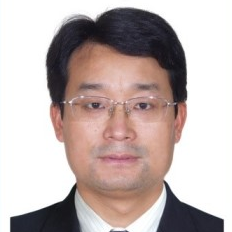Sustainable, Self-Healing, and Functional Building Materials
A special issue of Materials (ISSN 1996-1944). This special issue belongs to the section "Construction and Building Materials".
Deadline for manuscript submissions: closed (20 April 2022) | Viewed by 28376
Special Issue Editors
Interests: cement-based materials; self-healing cementitious materials; low carbon cementitious materials; materials performance under extreme environment
Interests: functional building materials; smart building materials; sustainable building materials; durability of concrete
Special Issues, Collections and Topics in MDPI journals
Special Issue Information
Dear Colleagues,
Concrete is the most frequently used building material, which accounts for 5–10% of global CO2 emissions. Due to the brittle nature of concrete, cracking and cracking-related deterioration are among the most important factors threatening the integrity, durability, and safety of concrete structures. Self-healing, a phenomenon originating from biological systems, is a promising concept that can be adopted to treat cracks in cementitious materials. Attaching such new function to cementitious materials can extend the service life of concrete structures and mitigate the depletion of natural resources, energy consumption, and CO2 emissions associated with concrete production and structural maintenance. This could be an important approach towards the sustainability of the modern cement and concrete industry.
The self-healing of cementitious materials can be achieved mainly through the following three strategies: (i) autogenous healing; (ii) the encapsulation of polymeric materials; (iii) the microbial production of minerals (i.e., calcium carbonate).
In autogenous healing, which is considered a natural phenomenon, concrete cracks are filled through the hydration of unhydrated cement particles or the carbonation of dissolved calcium hydroxide in the presence of moisture or water.
The encapsulation of polymeric materials can contribute to filling cracks by the conversion of healing agent to foam in the presence of moisture. The polymeric adhesives are often designed to provide extrinsic sealing through the polymerization and coalescence of the adhesives. Polymeric adhesives can also fill the cracks and harden when in contact with the alkalis or hydroxide ions.
Biological healing processes are based on the production of minerals by living organisms through biomineralization, which is a widespread phenomenon in nature. In this process, biominerals are formed through the reaction of metabolic products generated by microorganisms with the surrounding environment. Among the various pathways of mineral production through biomineralization—such as carbonates, sulfides, silicates, and phosphates—the precipitation of calcium carbonate has attracted widespread interest due to its efficient bonding capacity and compatibility with concrete compositions.
In this Special Issue, modern trends in self-healing concrete preparation, including the healing fundamentals and mechanisms as well as the properties of healed concrete, are highlighted and discussed. Sustainable techniques and new functional materials related to self-healing cementitious materials will also be covered.
It is my pleasure to invite you to submit a manuscript for publication in this Special Issue. Full papers, communications, and reviews are all welcome.
Prof. Dr. Zhengwu Jiang
Prof. Dr. Biqin Dong
Guest Editors
Manuscript Submission Information
Manuscripts should be submitted online at www.mdpi.com by registering and logging in to this website. Once you are registered, click here to go to the submission form. Manuscripts can be submitted until the deadline. All submissions that pass pre-check are peer-reviewed. Accepted papers will be published continuously in the journal (as soon as accepted) and will be listed together on the special issue website. Research articles, review articles as well as short communications are invited. For planned papers, a title and short abstract (about 100 words) can be sent to the Editorial Office for announcement on this website.
Submitted manuscripts should not have been published previously, nor be under consideration for publication elsewhere (except conference proceedings papers). All manuscripts are thoroughly refereed through a single-blind peer-review process. A guide for authors and other relevant information for submission of manuscripts is available on the Instructions for Authors page. Materials is an international peer-reviewed open access semimonthly journal published by MDPI.
Please visit the Instructions for Authors page before submitting a manuscript. The Article Processing Charge (APC) for publication in this open access journal is 2600 CHF (Swiss Francs). Submitted papers should be well formatted and use good English. Authors may use MDPI's English editing service prior to publication or during author revisions.
Keywords
- concrete
- self-healing cementitious materials
- sustainable cementitious materials
- functional building materials
- healing mechanisms
- crack filling
- microstructure
- mechanical properties
Benefits of Publishing in a Special Issue
- Ease of navigation: Grouping papers by topic helps scholars navigate broad scope journals more efficiently.
- Greater discoverability: Special Issues support the reach and impact of scientific research. Articles in Special Issues are more discoverable and cited more frequently.
- Expansion of research network: Special Issues facilitate connections among authors, fostering scientific collaborations.
- External promotion: Articles in Special Issues are often promoted through the journal's social media, increasing their visibility.
- e-Book format: Special Issues with more than 10 articles can be published as dedicated e-books, ensuring wide and rapid dissemination.
Further information on MDPI's Special Issue polices can be found here.







